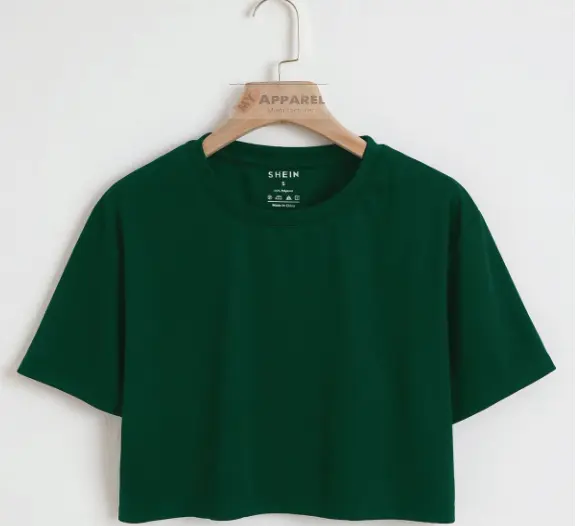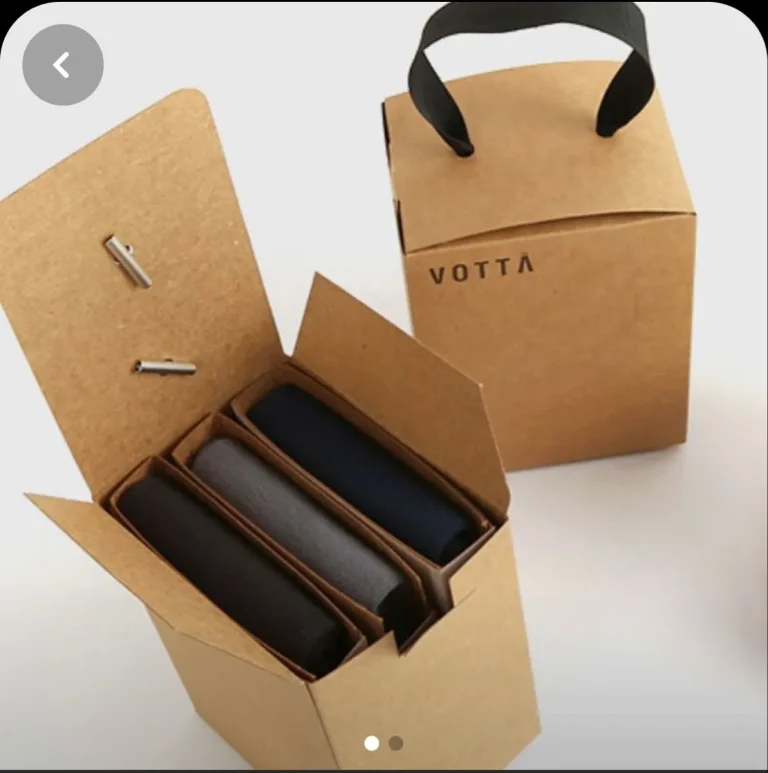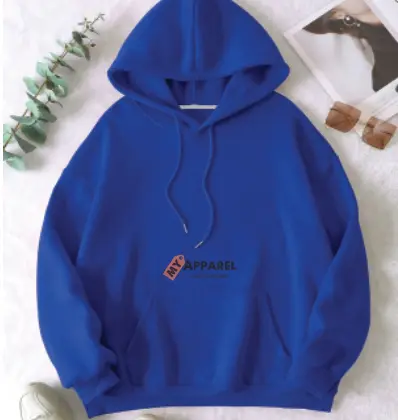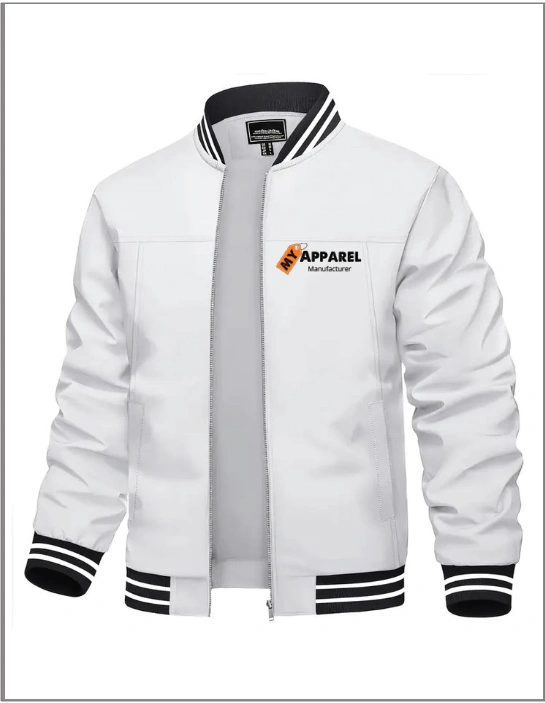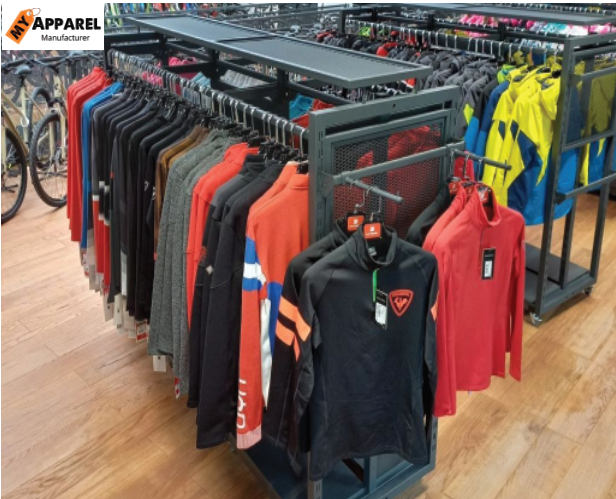Jeans manufacturing is more than just making pants—it’s a symbol of rugged durability and timeless style. Whether you wear them for comfort or fashion, understanding how jeans are made gives you a deep appreciation for every stitch, rivet, and weave. From the raw cotton stage to the stylish finished product, the jeans manufacturing process combines tradition, technology, and artistry.
In this comprehensive guide, we’ll explore how jeans are produced, the key stages of design, and how the best Clothing Manufactures in China plays a vital role in delivering high-quality denim to global fashion markets today.
Understanding the Origins of Jeans Manufacturing
Jeans were born out of necessity. In 1873, Jacob Davis and Levi Strauss invented denim jeans to serve as durable workwear for miners during the California Gold Rush. What started as practical clothing quickly evolved into a global fashion icon. For nearly 150 years, jeans have adapted to cultural shifts, fashion trends, and new technologies, making them a staple in wardrobes worldwide.
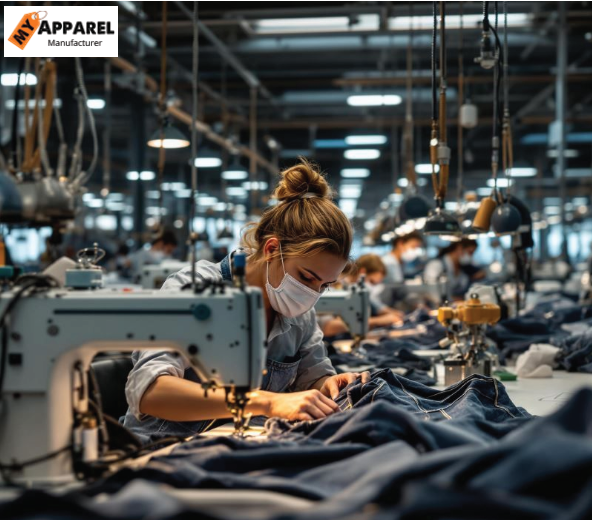
The Jeans Manufacturing Process: Step by Step
1. Cotton to Yarn: Creating the Foundation
The process begins with raw cotton. Fibers are spun into yarn, which forms the foundation of the denim fabric. To get the signature blue color, the warp yarns (the vertical threads) are dyed with indigo, while weft yarns (the horizontal threads) are left white or lighter.
2. Weaving the Denim Fabric
Once dyed, the yarns are woven together using a twill weave, giving denim its signature diagonal ribbing. The interlacing of indigo-dyed warp yarns and undyed weft yarns creates the characteristic denim look. Post-weaving, the fabric undergoes processes like washing, brushing, or sanding to refine its texture and prepare it for cutting.
3. Cutting and Sewing
The denim fabric is cut into precise shapes based on detailed patterns. These cut pieces are stitched together to form the basic jeans structure, incorporating elements like pockets, belt loops, zippers, and seams. Reinforced stitching ensures that jeans remain durable under stress.
4. Distressing and Treatments
To achieve unique looks, many jeans go through distressing treatments, which include sanding, enzyme washes, acid washes, and bleaching. These treatments create worn-in effects and add character to the fabric, giving every pair a slightly different look.
5. Adding Rivets and Final Touches
Rivets—small metal fasteners—are added to high-stress areas like pocket corners. Labels, buttons, and tags are also attached. A final quality control inspection ensures that the jeans meet durability, fit, and design standards.
Designing the Perfect Pair of Jeans
Designing jeans involves far more than picking a fabric and a thread. It’s a strategic process that blends creativity with practical requirements to meet fashion standards and consumer demands. Here’s how to design jeans that stand out in today’s competitive fashion market.
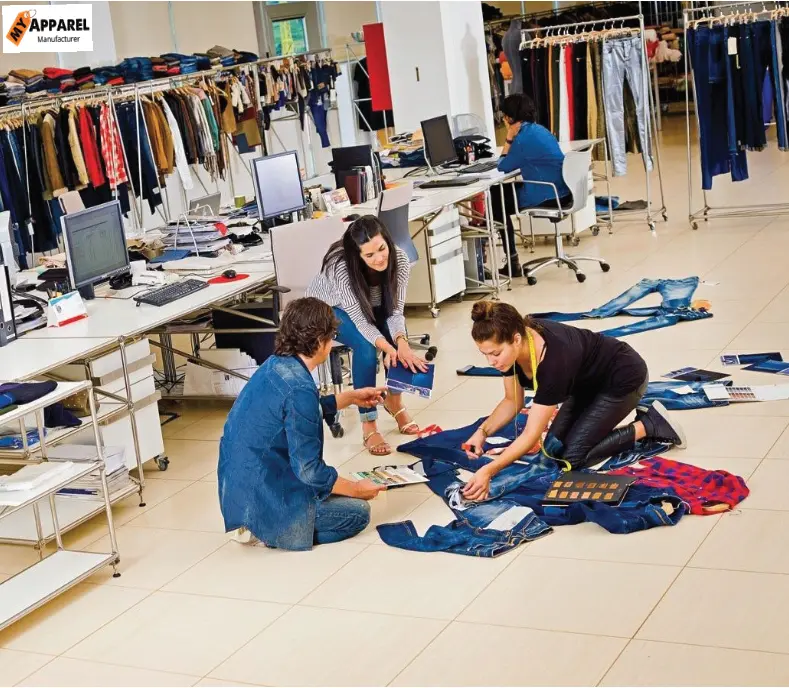
1. Know Your Brand and Audience
Start with a clear brand identity. Are you designing for teens, professionals, or eco-conscious consumers? In jeans manufacturing, defining whether your denim will be trendy, premium, affordable, or sustainable is essential. Understanding your audience ensures that your designs connect with your market.
2. Visualize the Final Product
Imagine how the jeans should look and feel. Decide on the fit (skinny, straight, bootcut), color (indigo, black, washed), rise (high, mid, low), and stylistic details like distressing, embroidery, or contrast stitching.
3. Choose the Right Fit
Fit is everything in jeans design. Choose from styles like straight cut, slim fit, bootcut, flared, or boyfriend. The key is ensuring that the jeans offer both comfort and visual appeal, so accurate sizing and pattern making is crucial.
4. Incorporate Functional Details
Beyond aesthetics, jeans manufacturing must also focus on practicality. Choose pocket styles, closure types (zipper or button fly), and reinforce high-wear areas with rivets or double stitching. These functional choices elevate both durability and user experience.
5. Prototype and Refine
Once the design is finalized, a prototype is made to test comfort, fit, and appearance. Use feedback to adjust details, then proceed to production, ensuring strict quality control standards are maintained.
Popular Types of Jeans for Every Style
With so many denim variations, finding the right type can be overwhelming. Here are the most popular jeans styles and their characteristics:
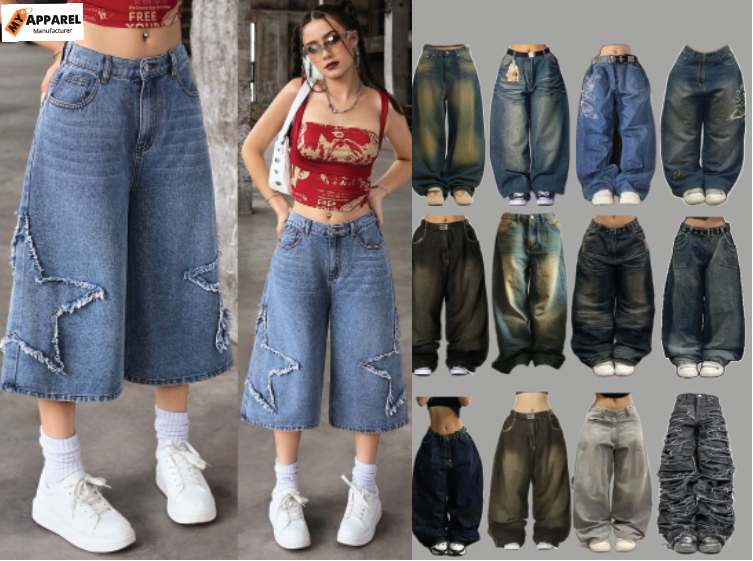
1. Straight Leg Jeans
Timeless and versatile, straight-leg jeans are a staple in jeans manufacturing. Maintaining the same width from hip to ankle, they’re ideal for both casual and semi-formal wear, pairing well with everything from sneakers to dress shoes
2. Slim Fit Jeans
Slim fit jeans hug the body but offer more room than skinny jeans. Great for showcasing physique without restricting movement, they’re a go-to for everyday urban fashion.
3. Skinny Jeans
Tightly fitted from waist to ankle, skinny jeans provide a sleek, modern look. Best paired with oversized tops, jackets, or boots for a balanced silhouette.
4. Boyfriend Jeans
Relaxed and slightly baggy, boyfriend jeans offer comfort and a casual-chic vibe. They’re often worn cuffed at the ankles and paired with fitted tops or blouses.
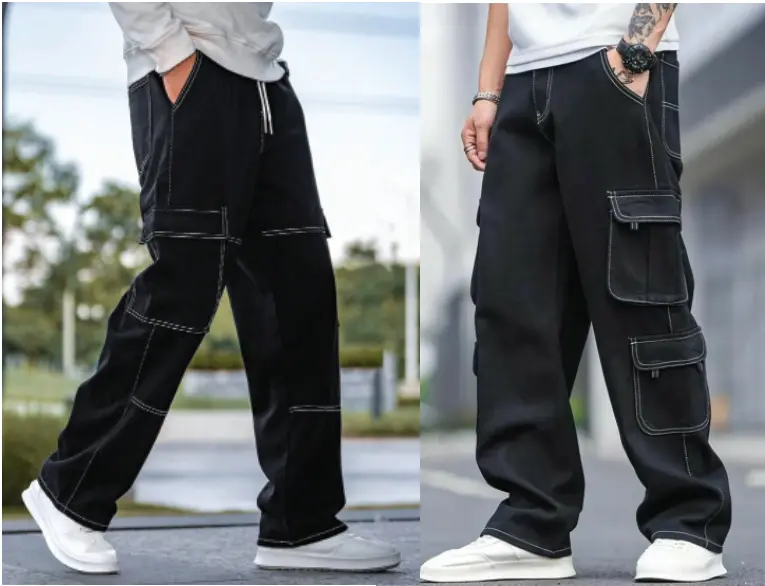
5. Bootcut Jeans
Fitted through the thigh and slightly flared below the knee, bootcut jeans are great with boots or heels. They add a flattering shape and a bit of retro flair.
6. Flared Jeans
A dramatic version of bootcut, flared jeans widen more noticeably below the knee. Often associated with ’70s fashion, they’re making a trendy comeback in modern fashion circles.
7. Tapered Fit Jeans
Wider at the top and narrower at the ankle, tapered jeans manufacturing strike a balance between slim and loose fit. They offer a modern, tailored look without being too tight.
8. Loose Fit Jeans
Loose fit jeans prioritize comfort and mobility. Popular in streetwear, they go well with hoodies, basic tees, and chunky sneakers.
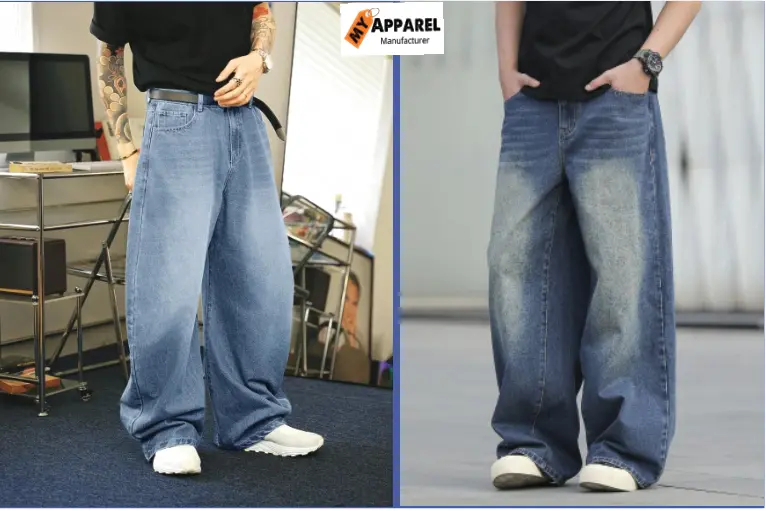
9. Mom Jeans
High-waisted with a relaxed fit around the hips and thighs, mom jeans offer a vintage-inspired silhouette that’s both flattering and comfortable.
Why Denim Stands the Test of Time
What makes jeans so enduring in fashion? It’s their ability to combine ruggedness with adaptability. Denim is strong, breathable, and perfect for customization—whether you’re distressing it, dyeing it, or adding modern cuts and patterns.
Moreover, modern innovations like sustainable denim production, eco-friendly dyeing, and stretchable fabric have made jeans even more appealing to both brands and consumers.
Final Thoughts: Your Next Denim Innovation Starts Here
Whether you’re a fashion startup or a global apparel brand, understanding the jeans manufacturing process is key to designing products that resonate. From the careful spinning of yarn to the placement of each rivet, jeans reflect craftsmanship and cultural history.
By choosing the right design, fit, and manufacturing partner, your brand can create jeans that meet fashion trends while maintaining function and comfort.
At My Apparel Manufacturer, we specialize in custom denim manufacturing for B2B brands worldwide. Let us help you turn your denim vision into a reality with expert guidance, low MOQs, and top-tier quality.
FAQs About Jeans Manufacturing
1. What materials are used to make denim jeans?
Most jeans manufacturing are made from cotton-based denim, sometimes blended with elastane for stretch. Premium brands may use organic or selvedge denim.
2. How long does it take to manufacture a pair of jeans?
The jeans manufacturing process—from fabric cutting to finishing—typically takes 1 to 2 weeks depending on complexity and order size.
3. What are the key steps in jeans manufacturing?
Main steps include fabric selection, cutting, stitching, washing (stone/acid wash), and adding details like rivets, zippers, and labels.
4. Can I customize my jeans design as a clothing brand?
Yes. With private label jeans manufacturers, you can customize everything from fabric and fit to wash, buttons, and packaging.
5. Are sustainable jeans options available?
Absolutely. Many manufacturers now offer eco-friendly denim made with organic cotton, low-water dyeing, and recycled materials.

